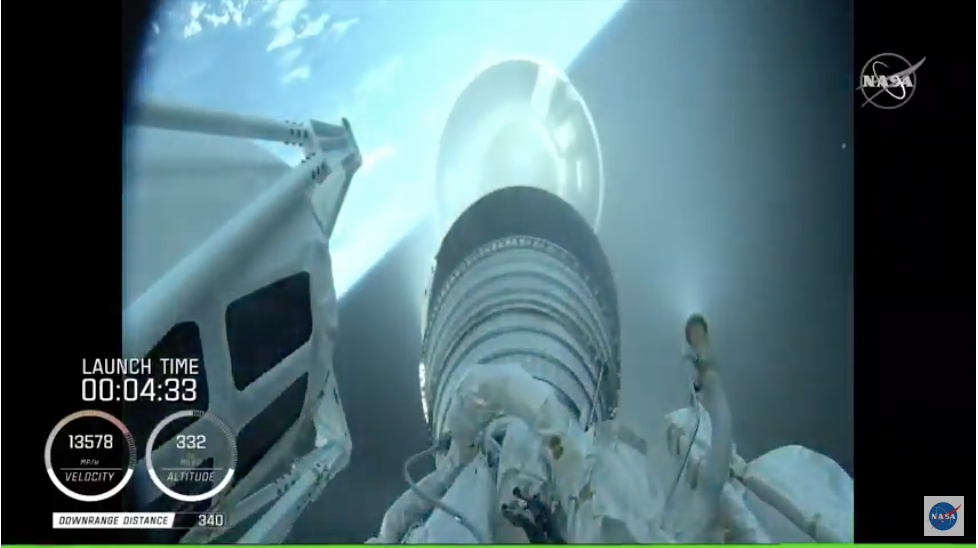It was another success for NASA as its Mars 2020, Perseverance rover mission successfully launched toward Mars atop a United Launch Alliance Atlas V rocket from Space Launch Complex 41 at the Cape Canaveral Air Force Station in Florida at 7:50 am EDT (11:50 GMT).
The rocket cleared the tower in around 5 seconds with the help of around two million pounds of thrust. Around 11:52 GMT, the solid rocket booster helping the Atlas V launch the Mars rover separated from the booster as planned.
Two minutes later, the rocket's payload fairing, or nose cone, which was made in Switzerland by Ruag Space, separated from the vehicle as scheduled. This was swiftly followed by the first stage of the Atlas 5 rocket separating from Centaur.
By 12:04 GMT, the Atlas V's first Centaur burn was complete.
As of 12:09 GMT, the NASA team were waiting for the Atlas’s second burn.
Despite already successfully landing on Mars, the NASA crew said via the Live TV stream, that some team members would not rest until Perseverance successfully landed on the martian surface in seven months time.
Given NASA’s continued presence at the Red Planet with surface roaming robots, why go back with another rover?
Over the past two decades, research has shown that in its early history Mars was once a very different place from the cold, dry planet we see today. Instead, evidence discovered by on the ground rovers and orbital missions point to long, stable periods where liquid water prospered on the martian surface.
These considerably wetter conditions could, if they endured long enough, have provided a suitable environment to support the development of microbial life.
Finding signs that ancient organisms once thrived on the planet is one of the major goals of NASA’s Mars 2020 mission and its Perservance rover.
Nicknamed Percy, the small car-sized rover, which weighs just under 1,043 kilograms, will collect rock and soil samples for a possible return to Earth by future Mars sample return missions from its landing location in Jezero Crater.
Jezero Crater is thought to contain fan-delta deposits, rich in clays. Scientists want to visit the shoreline of this sizeable impact site because it may have fossilised microbial life preserved in the now, dried out sediments.
The mission is not limited to finding signs of life however, it is also designed to better understand the geology and climate of Mars, and to pave the way for human exploration beyond the Moon.
Perseverance will also carry a separate technology experiment to the martian surface — a 1.8 kilogram helicopter or “marscopter” named Ingenuity, that will be the first aircraft to fly in a controlled way on another planet.
Ingenuity features four specially made carbon-fiber blades arranged into two 1.2-meter-long (4-foot-long) counter-rotating rotors that spin at around 2,400 rpm — about eight times as fast as a standard helicopter on Earth — plus innovative solar cells, battery, avionics, sensors, telecommunications, and other designs and algorithms.
One of Ingenuity’s first objectives when it gets to the Red Planet is just to survive the first night on the frigid Martian surface which plummets to temperatures as low as minus 90 degrees Celsius (minus 130 degrees Fahrenheit) at Jezero Crater.
Like the two missions, Tianwen-1 and the UAE’s Hope mission, that lifted off ahead of Perseverance, NASA’s mission will also reach Mars a little over 6 months from now and is scheduled to land in Jezero Crater on the Red Planet on 18 February, 2021.











